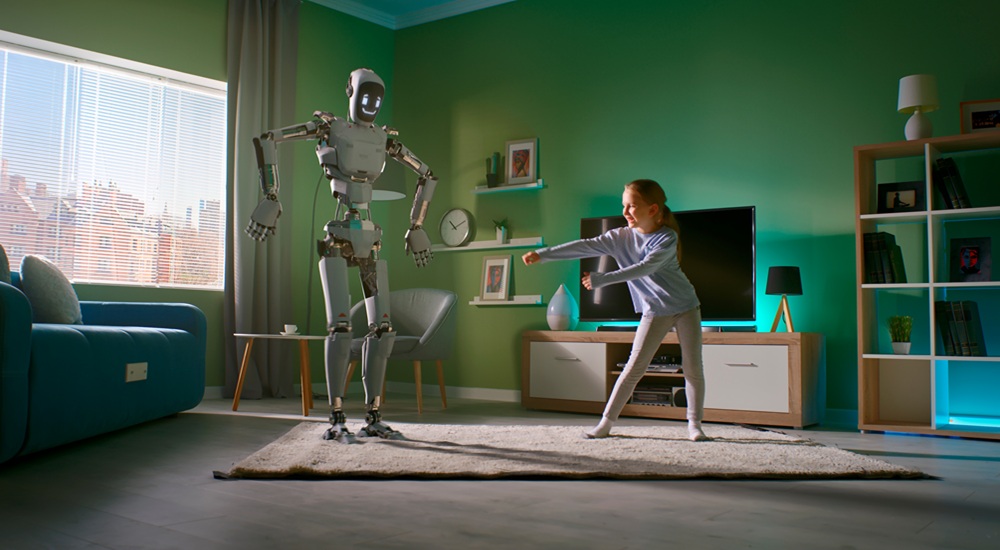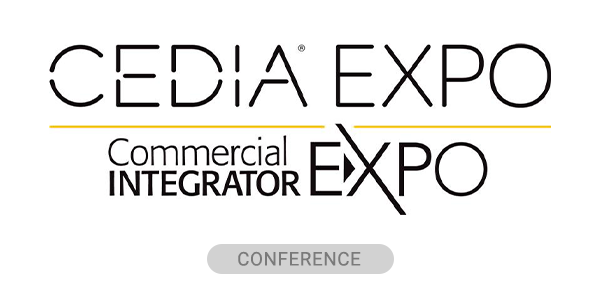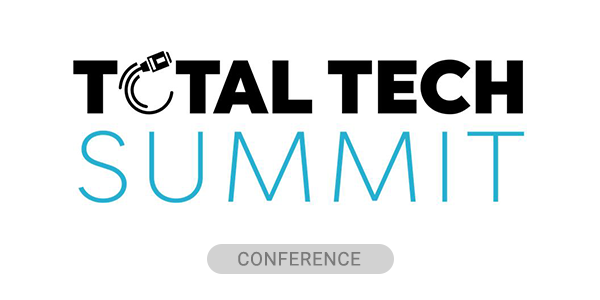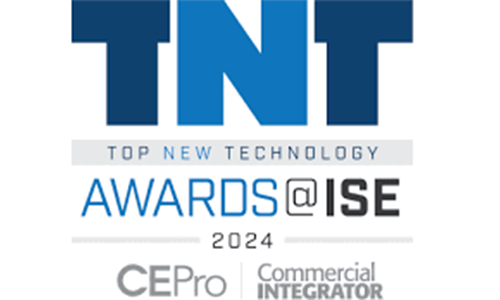For years, the custom integration channel has led the way in bringing new technologies into the home. Audio, video, whole-house control, lighting, and wellness systems have all evolved from niche offerings into mainstream categories.
Now, according to Kyle Steele, founder of Southern California custom integration staple Global Wave Integration, the next big step is coming faster than most people expect. That step is humanoid robots.
Several notable companies are currently developing humanoid robots, including Tesla, Figure AI, Hanson Robotics, 1X, SoftBank, and more.
“This is happening,” Steele says. “Everyone is talking about AI and robots.”
From Curiosity to Client Demand
Steele recalls a recent trip to Integrated Systems Europe in Barcelona where he stumbled upon a humanoid robot on the trade show floor. The machine walked right up to him, shook his hand, and interacted with attendees while a robotic dog performed tricks.
“It was the weirdest experience, because it’s so human, but it’s not,” Steele said.
Now, Steele says several of his Los Angeles-area clients are deeply interested in humanoids—some of which are actually investors or developers—and some have even placed orders. One such homeowner is even planning to replace a team of live security guards with a group of humanoids patrolling the property.
Prices currently range from around $20,000 to $200,000, making them realistic purchases for ultra-high-net-worth families who are usually first to embrace new technology.
Today’s humanoids are far from perfect. They still struggle to recover after falling, which limits their usefulness in some scenarios. But homeowners are already pairing them with other emerging tools. Steele describes clients who are using perimeter beams to trigger drones that launch and track intruders, complete with two-way communication to tell trespassers to leave.
Within that ecosystem, humanoids can serve as roaming eyes and ears that extend traditional surveillance in a very visible and interactive way.
Integration With Home Automation
The big question for integrators is whether humanoids will connect with existing control platforms. Steele is confident that they will.
“It always comes down to open APIs. If they have an open API, we’d love to start working with it now,” he says.
The vision is compelling. A humanoid could learn the homeowner’s behavior, anticipate needs, and run the home. You might tell it in the morning to have ESPN ready on the TV, close the shades, and prepare dinner for six o’clock. Unlike a voice assistant, it combines digital intelligence with physical ability, blurring the line between automation and personal service.
“I can totally envision where you’re having the humanoid do everything,” Steele says. “If it’s already doing the housekeeping and everything else, who’s to say it can’t control your home, especially if it’s connected to the internet.”
According to Steele, the custom integration industry has an opportunity to be on the bleeding edge of home AI and robotics.
“Who’s better fit to service these devices in the home than our industry? We should be on the forefront of this,” Steele notes.
Steele also sees possibilities in wellness and senior care. In Japan, humanoids are already being used in elder communities as companions and helpers. The CEDIA channel has leaned heavily into wellness in recent years with indoor air quality, lighting for circadian health, and aging-in-place solutions. Humanoids could eventually become part of that same story.
Companionship, 24/7 monitoring, and assistance with fall detection all make sense, though there are still liability issues around lifting or moving people. Even so, Steele says the roadmap is clear and integrators should be ready to play a role.
“When we talk about aging in place solutions, that’s a no brainer for caregiving, 24/7 support, social isolation, and fall detection,” Steele says.
Timing and Industry Positioning
Like any technology, humanoids will move through the adoption curve. Luxury homeowners are leading the way, while builders may take decades to make them standard. But momentum is growing quickly.
Steele believes humanoids will soon be part of the CEDIA Expo show floor. Although they weren’t, there were plenty of discussions about robotics, including a panel discussion session and several other interviews CE Pro conducted about robotics.
CEDIA’s Global CEO Daryl Friedman even cited humanoids and robotics as the next big thing that integrators should be anticipating over the next few years.
“I was hoping to see them this year. I’d say 100% we’ll see them at next year’s show,” Steele says.
Excitement about humanoids comes with an undercurrent of caution. Regulation around AI and robotics has not caught up, which raises questions about safety and liability.
A Turning Point for Integrators
Steele’s message is clear. Integrators cannot afford to ignore humanoids. Just as lighting fixtures and wellness systems moved from the fringe to the core of many integration businesses, humanoids may be next.
At industry conferences, many integrators still say they aren’t using any AI tools to help them do their jobs, which can result in them falling behind their competitors. Not embracing these next-generation AI technologies and offering them to clients will result in the same, Steele says.
For the CEDIA channel, humanoids are more than the next cool gadget. They represent a whole new category of service and engagement that could reshape the way integrators work with clients, and they are arriving faster than anyone might have imagined.
“AI isn’t going to replace integrators,” Steele said. “But the companies who embrace AI and use it as much as possible will thrive. Other companies will be left behind.”







